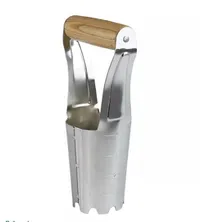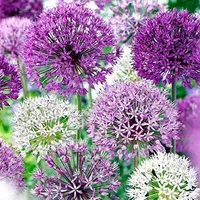Now's the time to plant your allium bulbs — here's how to do it the right way
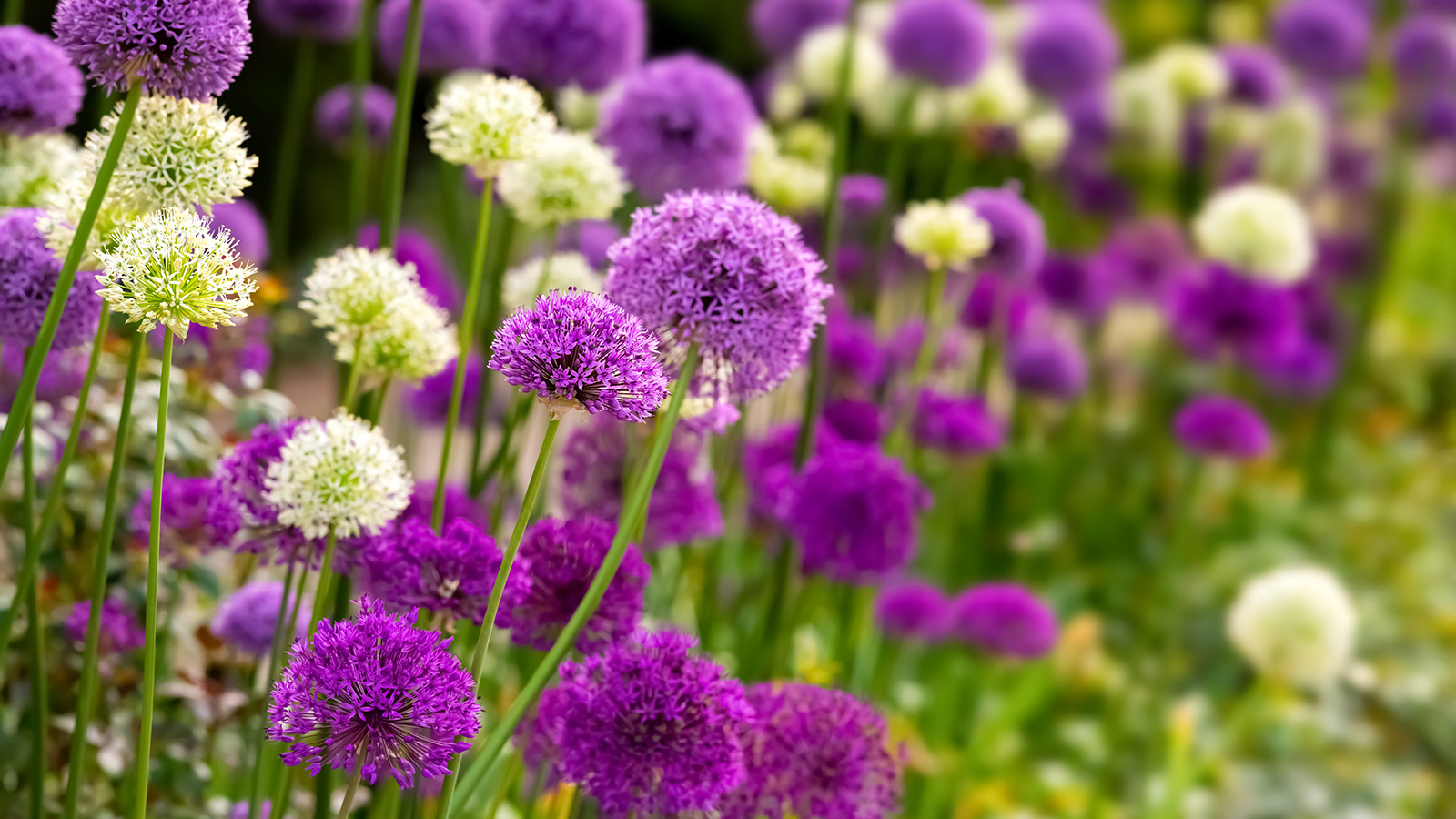
As you think ahead to next year’s planting, there’s a good chance you’ll consider adding ornamental alliums to the garden lineup. This sculptural plant features large, globe-like blooms made up of tiny flower clusters, which stand on the end of long, mostly bare stems. Alliums add height and dimension to any garden, as well as color; you can find varieties in shades of red, pink, white, blue and purple. Whether you’re looking to create a dramatic backyard landscape or simply accent your existing flower scheme, alliums are a compelling aspect.
Experienced and amateur gardeners alike can enjoy ornamental alliums, since they offer great impact for relatively low maintenance. These plants are hardy perennials that can tolerate a mix of soils and are naturally resistant to most insect pests. Gardeners can also choose between different sizes of plant, to better suit the available space in their yard and their design scheme. At their largest alliums can grow several feet tall, while smaller species hover around the one foot mark; this versatility ensures there’s an allium for every garden.
If you think an allium is for you, the important thing is to understand when and how to plant your bulbs so that you can guarantee beautiful blooms come the spring. It's best to plant your allium bulbs now for beautiful springtime blooms, so don your gardening gloves, break out your pruning shears, and get planting.
When to plant alliums
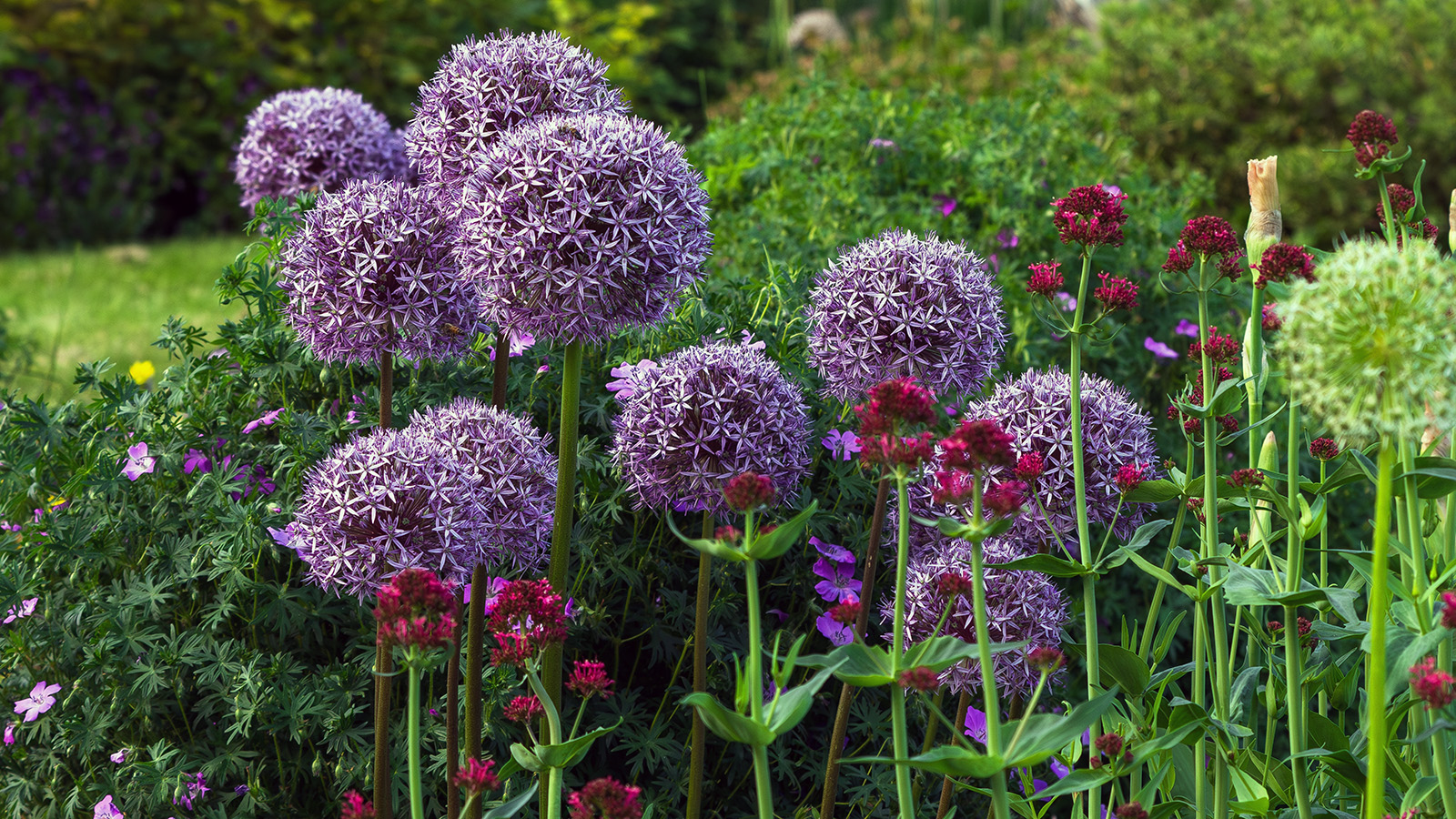
Your best approach is to plant your allium bulbs in early October
We've covered the flowers you can plant right now for winter blooms, but alliums tend to flower in May and June, but you’ll need to get prepared months in advance. If you are purchasing allium bulbs and not transferring an existing plant, then you will need to expect around 12 weeks for the bulbs to germinate and then several more weeks for them to grow. Now, these plants are quite hardy, in that you have a flexible window within which your allium should be able to take root and thrive. All bulbs that are planted in the early to mid autumn should bloom come the spring, but take note that the later the planting, the later that first flowering.
Your best approach is to plant your allium bulbs in early October. This will ensure that your plant is mature enough to bloom as soon as that season starts next May, giving you the longest flowering time. If you are forced to wait, your bulbs should be able to keep until early December – just make sure to check for mold. However, if you live in a particularly cold area, the best metric to use for bulb planting is a few weeks before the ground starts to freeze.
How to plant allium bulbs
How many bulbs to plant
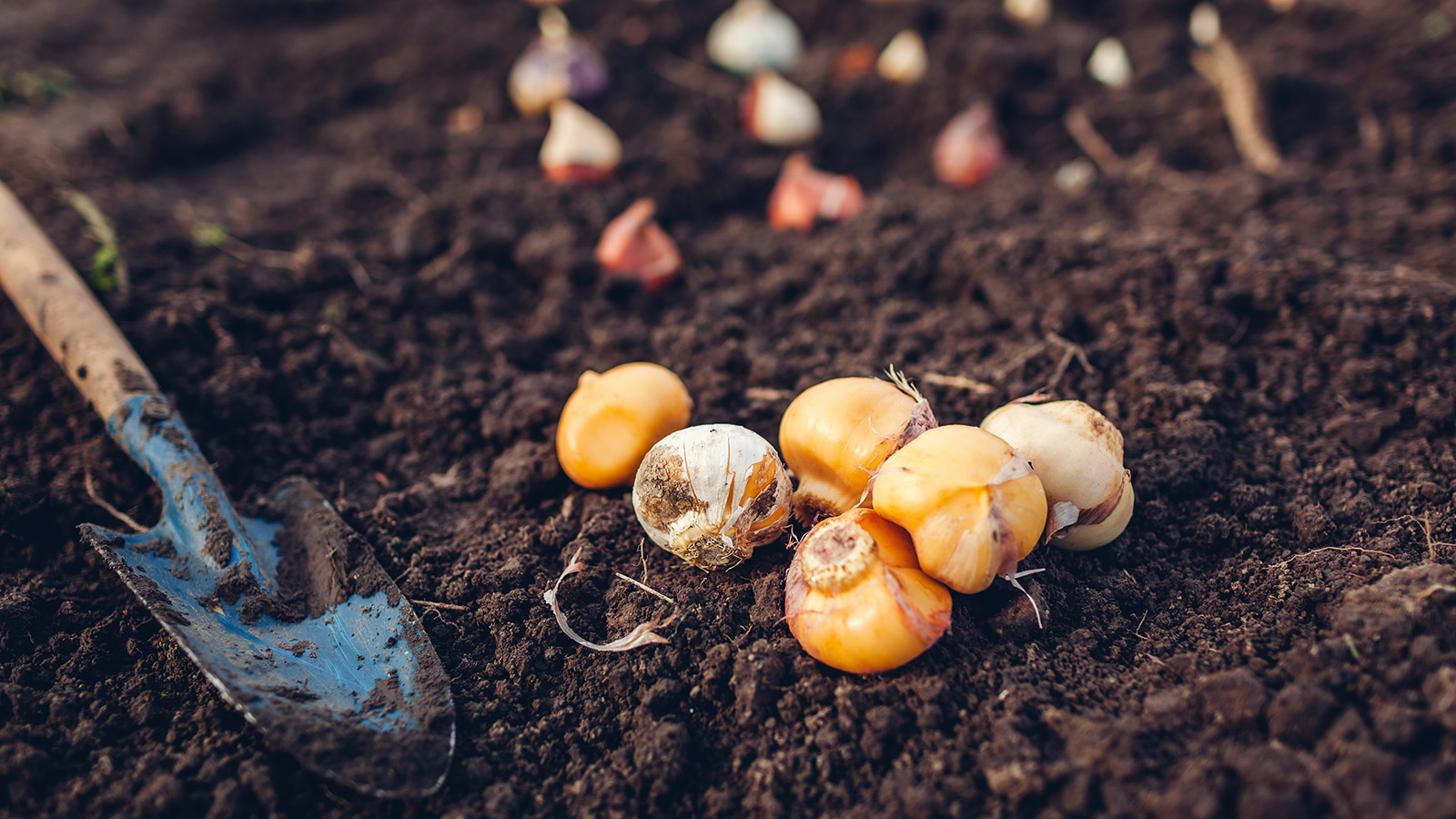
Gardeners take a few different approaches, depending on the size of the varietal and the effect they’re going for. As a general rule, bulbs should be planted individually in their own holes in the ground, to ensure sufficient space and nutrients to thrive. If you are only placing a few accent alliums, then you can scatter these plantings around the garden as you choose. However, if you’re looking to cultivate an entire sweep of flowers, then you’ll need to get the spacing right.
As a general rule, bulbs should be placed about 4 - 10 inches apart for a relaxed, natural look. The larger your species, the more space they’ll need within that range. Don’t worry if these gaps look quite large at first; you have several design options to choose from. One popular approach is to plant low cover foliage in between the flower stems and form an attractive carpet of leaves; an alternative is to plant other tall, meadow species amongst the alliums for a prairie effect.
Get instant access to breaking news, the hottest reviews, great deals and helpful tips.
Kent & Stowe hand bulb planter: $28 @ Walmart
Highly recommended by our garden expert Camilla, Kent & Stowe’s bulb planter is not only ideal for planting bulbs, it can also be used to plant seed potatoes and bedding plants. It allows you to plant to a diameter of 2.4-inches, with a 4-inch measurement scale to judge the planting depth. It has a polished carbon steel head and an ash handle.
Where to plant your alliums
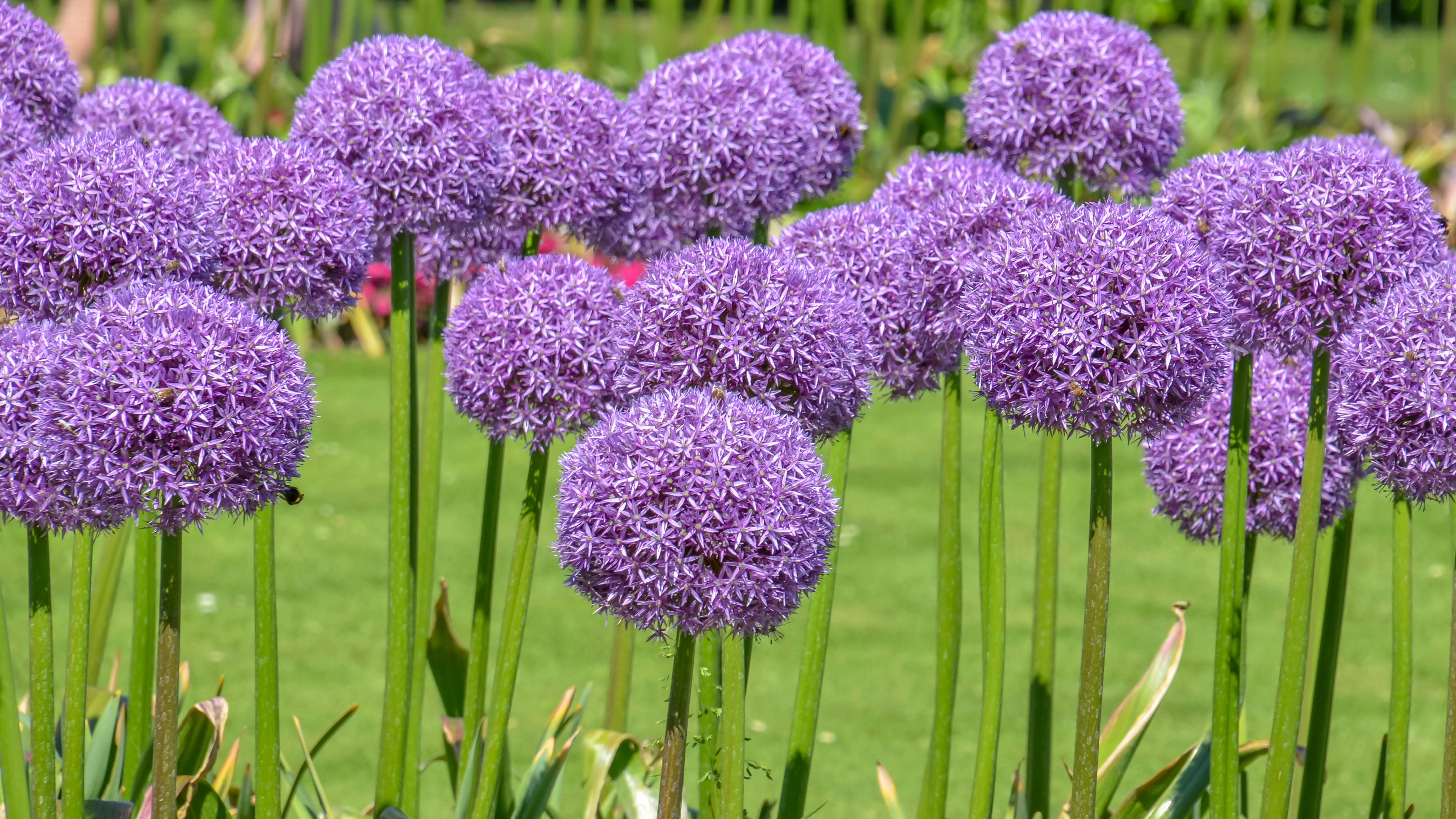
Alliums should be viable plants for gardens located anywhere between zones 4-9, thanks to their hardy nature that can tolerate greater extremes in climate. Still, you’ll want to plant the bulbs in the right conditions to ensure they grow successfully. Alliums prefer full sun and need several hours of direct light per day in order to flower fully, so don’t plant them in shaded spots. If you can give them 6-8 hours of sunlight per day, that is ideal as it helps them to grow strong stalks to support those clusters of flowers.
Soil should be well-draining so that water doesn’t collect and soak the allium bulbs, which can cause plant rot. While their ideal home is sandy, loamy soil with a slightly acidic pH, alliums can tolerate a few types of soil. Ideally it should be rich in nutrients, but you can always achieve this through fertilizing in the fall before planting. It is recommended that everyone apply additional fertilizer in the springtime for the best spring and summer growth. In general, most gardens should have suitable patches for alliums to grow.
How to plant the bulbs
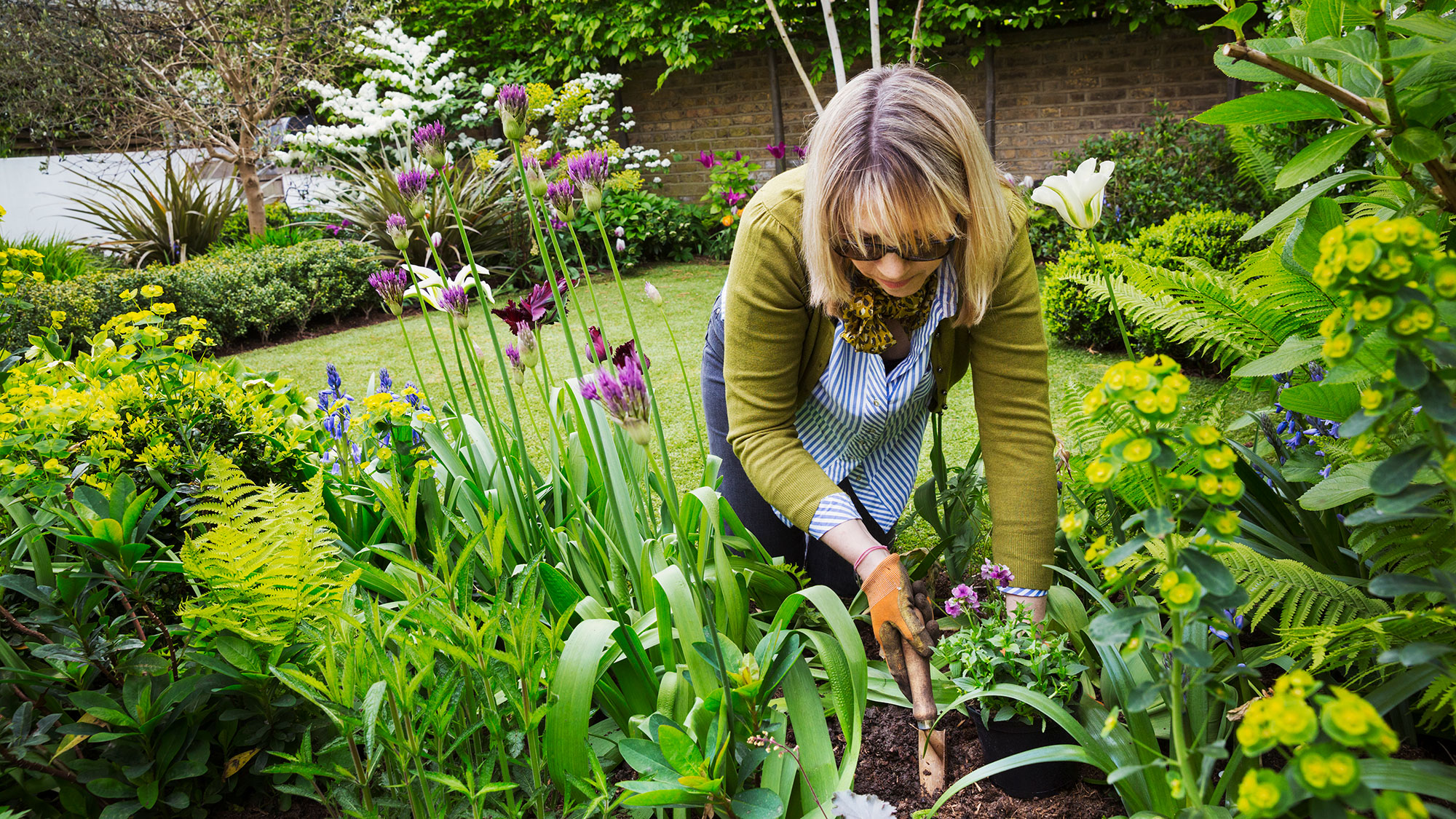
You’ve got your bulbs and your planting plan; now it’s time to get those bulbs in the ground. Determine how you want to space the bulbs and measure those distances in your garden, setting a marker at each point. Then, at each marker dig down into the soil to a depth of 2-4 times the bulb’s diameter. The bulb should be placed at least several inches underground and you should err on the side of too deep rather than too shallow.
Make sure that there is good, aerated soil underneath the bulb as well, so that the roots can penetrate fully. You may need to prep the ground ahead of time to ensure there are enough inches of high quality, well-draining soil. Once the bulb is nestled in its hole, cover it up with soil again. If the soil is already moist, you won’t need to water immediately. Otherwise, give it a good sprinkling of water and continue to keep watering on a consistent schedule as the bulb germinates.
Willard & May Allium Blend 30 Bulb Pack: $24 @ Amazon
This pack of 30 purple bulbs can be ordered for speedy delivery on Amazon, meaning you'll have enough time to get your alliums planted before the frost. They are best suited to USDA Hardiness Zone 4, and offer an extended bloom time.
How to look after your alliums
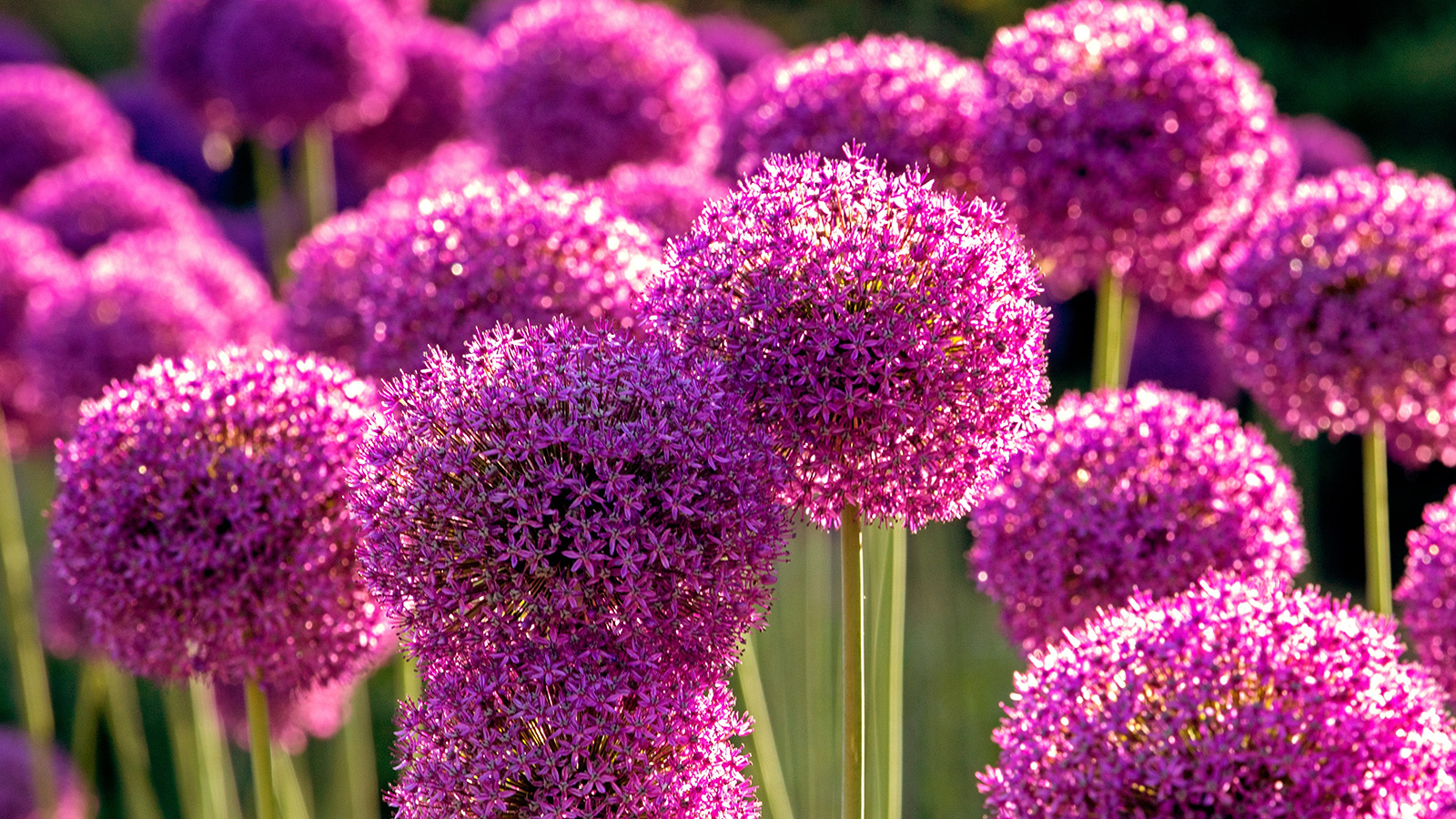
Once your alliums are established, they require little hands-on maintenance. The lack of foliage on the upper stems means you won’t need to remove unsightly, browning leaves and any leaves on the ground will be covered up by the foliage of low-lying plants. Still, here are a few things to keep in mind:
- Don’t overwater ground-planted alliums, as they are drought-tolerant and usually gain enough water from their environment.
- Potted alliums will need regular watering, but be careful not to let the soil get too moist.
- Apply a balanced fertilizer when the plants first start blooming in the spring. No other fertilizing is needed.
- You can prune dying blooms to help conserve the plant’s energy, but it is not necessary. Some gardeners choose not to deadhead as the old flowers can be attractive.
More from Tom's Guide
- 5 signs your lawn needs urgent repairs
- 5 fall lawncare tips you need to know, according to experts
- 7 flowers to plant in October for beautiful winter blooms

Despite making her home in urban metropolises, Madeleine Streets has been nurturing a green thumb for decades.
Raised by a garden designer, she is putting that childhood education to use by helping others learn how to make their garden bloom, while filling her own New York home with cat-friendly plants.
When not writing about gardening and the outdoors, Madeleine loves to cook, study wine and borrow books from her local library.
